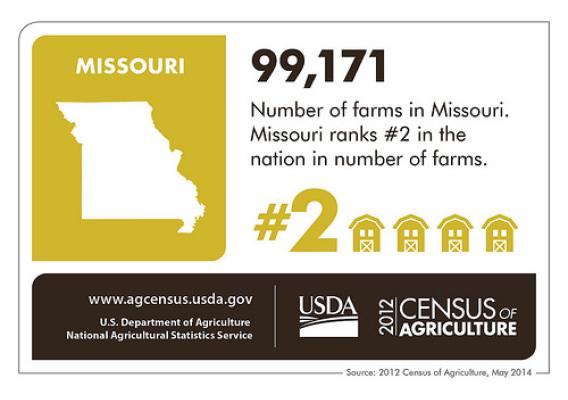The Census of Agriculture is the most complete account of U.S. farms and ranches and the people who operate them. Every Thursday USDA’s National Agricultural Statistics Service will highlight new Census data and the power of the information to shape the future of American agriculture.
Thanks to the fertile lands along the Missouri river, farming has always had a major presence in the Show Me State. As of 2012, only Texas has more farms than Missouri. The latest Census of Agriculture counted more than 99,000 farms in our state, which produced more than $9 billion in agricultural products, nearly equally divided between crop and livestock products.
Missouri farmers are always looking for innovative ways to connect our state’s residents with local agriculture and to find new markets. That’s why, in 2012, there were nearly 4,000 farms selling value-added products, such as cheese, preserves, or locally-produced wine. That year, 844 farms in Missouri also offered agritourism and other recreational services, such as hay rides. And for those residents who want to receive fresh local products, Missouri also had 291 farms participating in the local community-supported agriculture programs.










